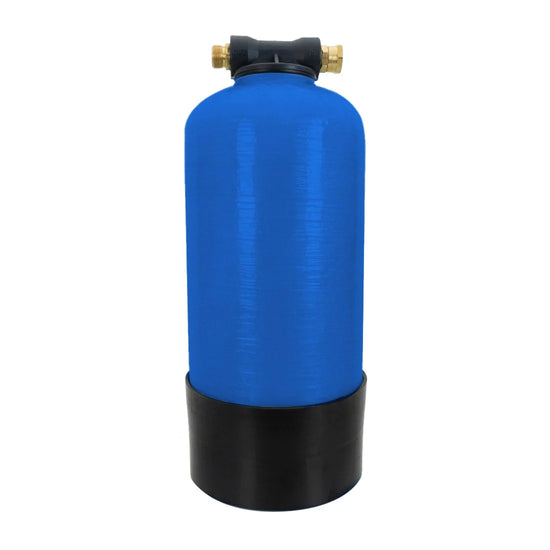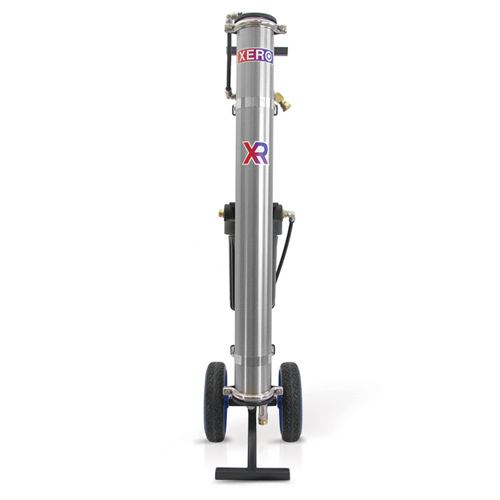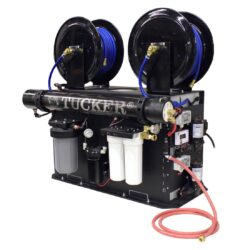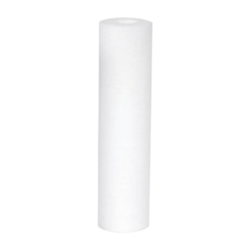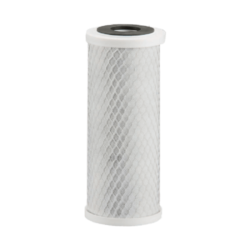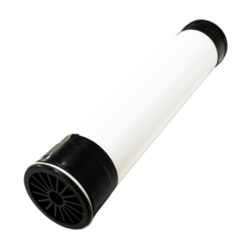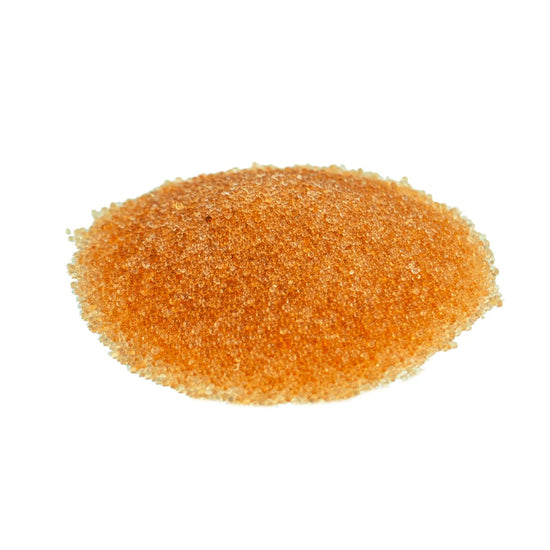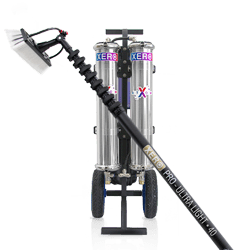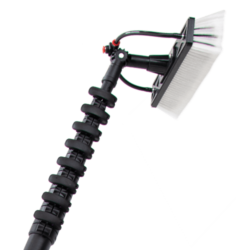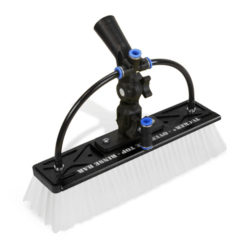UNDERSTANDING PURIFICATION
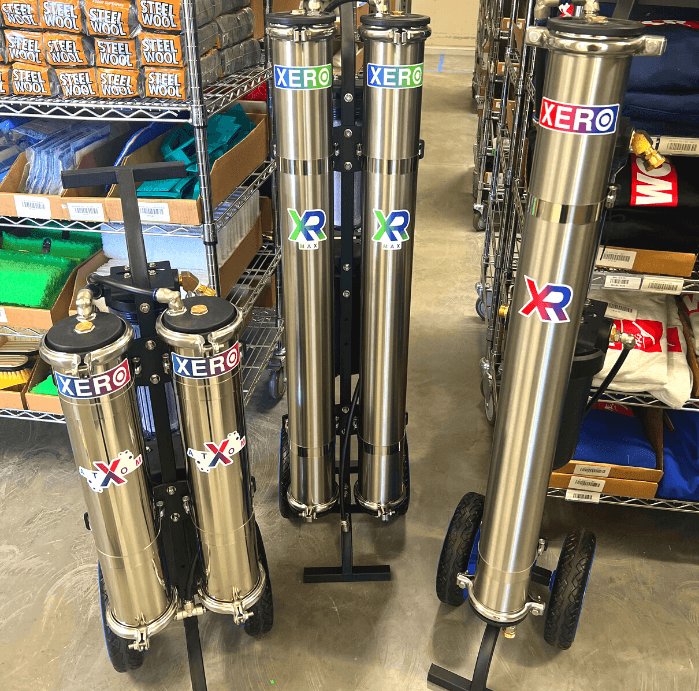
Choosing A System
Understanding waterfed purification can be confusing and overwhelming for people, we get it. However, when choosing between a DI tank versus a multi-stage system, there are a few things to consider right off the bat:
1. What is your TDS? If you need to know what TDS is or how to find this out, we will dive into it more in-depth below. Simply put, it is a measure of your water quality, and knowing this is crucial to know what type of purification system you need for your business.
2. How frequently will you be cleaning with your waterfed system? If you have hard water (TDS above 150) but are going to be cleaning less frequently, say once or twice a week, you may be able to get by with a DI single-stage system alone versus a multi-stage system. However, if you're going to be cleaning daily and have harder water, a multi-stage system is a must. It is more expensive upfront but way more cost-effective in the long run, and we will explain why as you read this guide.
3. How high do you need to clean? This will determine which waterfed pole to pair with your system. Feel free to move on to our Waterfed Pole Guide portion if you want to learn more about waterfed poles.
4. How many people will be cleaning with waterfed poles at one time? For instance, if you want to run two poles at once , a unit such as the XERO Pure MAX would be a stellar option for you.
Pictured above is our XERO brand of purification systems: the XERO ATOM, XERO Pure MAX , and the XERO Pure , each have their own unique benefits. We end up recommending these systems the most because not only are they super high-quality and efficient, but we have created a 12-year warranty that really benefits the customer. Read more about the XERO Warranty for the purification systems, not including the RO membrane.
Keep reading to learn more about waterfed purification!
Why is it important to know your TDS?
Simply put, your TDS will determine what kind of system you need.
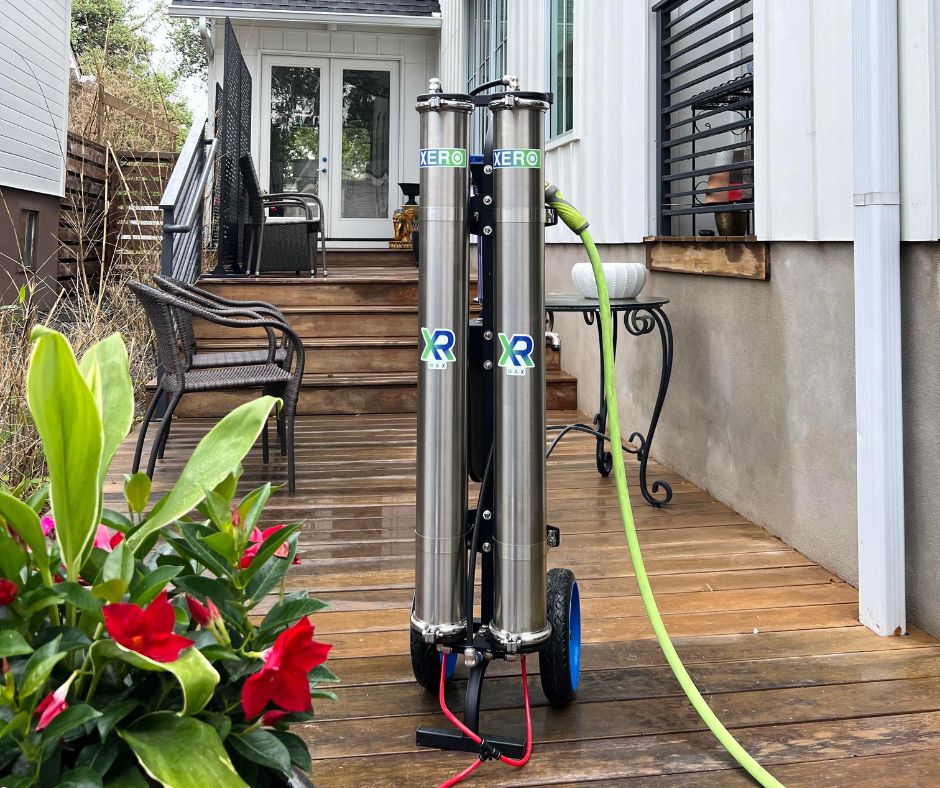
Getting To Pure
Getting your hands on “Purified Water” is the first step. To clean windows 100% spot free, the TDS of your water needs to be at 0. There are certain cases where you can clean just slightly over 0. It all depends on what’s in the water, though. To be safe and avoid spotty windows change your resin once your TDS reading starts to creep above 10.
TDS = Total Dissolved Solids. A simple measurement of water quality.
WHAT IS TDS?
TDS stands for "Total Dissolved Solids," which refers to any minerals, salts, metals, cations, or anions dissolved in water. When referring to TDS, we mean the overall quality and how hard (or soft) your water is. Your TDS and how often you plan on using your system (daily, frequently, infrequently, etc.) are two of the most important factors in choosing a waterfed purification system.
The lower the TDS, the softer water you have, and the lower your purification system cost can be. A higher TDS means the harder your water is, and you would need a multistage system to benefit you in the long run.
Start by checking your TDS here.
Can’t I just use tap water?
If you use normal tap water it will result in the glass appearing with a milky white residue. This is the result of the mineral content of tap water. Pure water automatically absorbs the dirt. Meaning, pure water or water without any mineral content, leaves windows perfectly clear once dry.
Across the country, water quality TDS readings fluctuate from 0 up to 1,000 or more. The lower your incoming TDS the more affordably you can produce pure water with a TDS of 0.
How to Test Your TDS?
It's easy to test your TDS, all you need is a TDS Meter and you can pick one up right here at Window Cleaning Resource.
How Should You Purify Water?
Learn more about Deionization Resin and Reverse Osmosis!
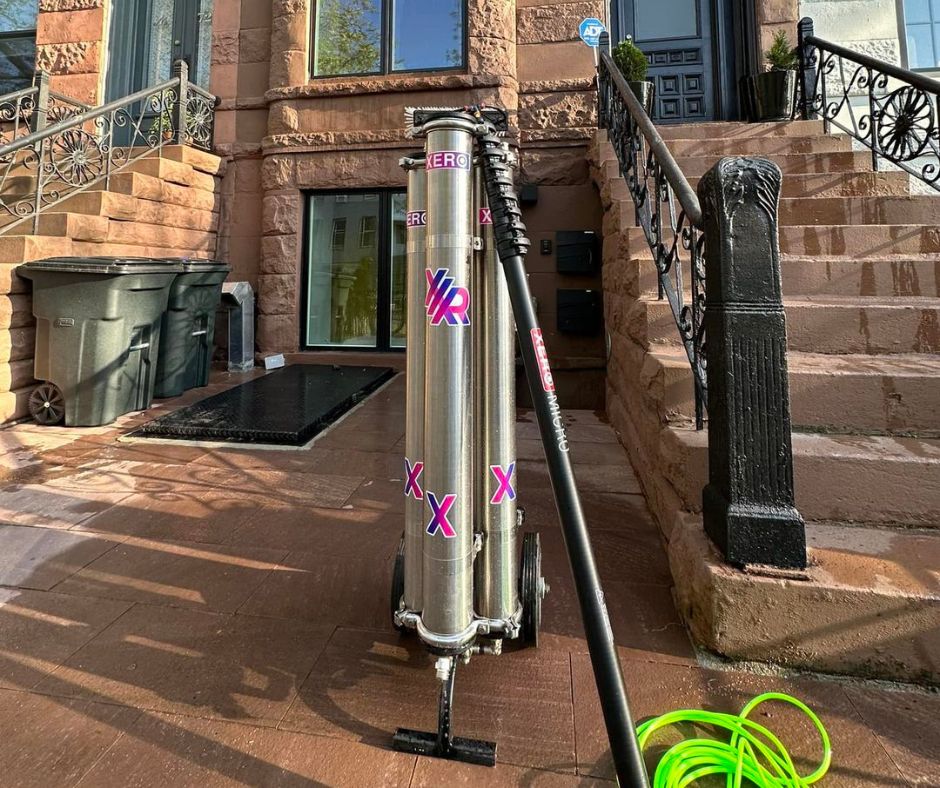
DEIONIZATION RESIN
Deionization Resin (or DI Resin) is what many window cleaners use to “Purify Water.” It can be used as a standalone filtration system or as the final step in a multistage purification system. Regardless of your water quality, Deionization Resin can be used to get you to 0 TDS.
Learn more about DI Resin
Deionization (DI) is a water filtration process whereby total dissolved solids (TDS) are removed from water through ion exchange. In simple terms, by controlling the electric charge of ions in the water, it is possible to remove the TDS. Much like a positively charged magnet will attract a negatively charged magnet (and vice-versa), DI resins attract non-water ions and replace them with water ions, leaving a more pure water form.
The big catch, however, is how long it will last. If you have a TDS on the higher end of the spectrum, you will burn through it much faster than if you start with a lower TDS.
REVERSE OSMOSIS
Adding a Reverse Osmosis Membrane “RO Membrane” to your system will reduce your incoming TDS reading by 90%, sometimes 95%.
Learn more about RO membranes
Reverse osmosis (RO) is a water purification technology that uses a semipermeable membrane to remove ions, molecules, and larger particles from drinking water.
Your RO membrane is in place to prolong the life of your DI Resin. If your incoming TDS is above 100 it is more cost effective to use a multistage system with an RO membrane attached.
DEIONIZATION RESIN
Deionization Resin (or DI Resin) is what many window cleaners use to “Purify Water.” It can be used as a standalone filtration system or as the final step in a multistage purification system. Regardless of your water quality, Deionization Resin can be used to get you to 0 TDS.
Learn more about DI Resin
Deionization (DI) is a water filtration process whereby total dissolved solids (TDS) are removed from water through ion exchange. In simple terms, by controlling the electric charge of ions in the water, it is possible to remove the TDS. Much like a positively charged magnet will attract a negatively charged magnet (and vice-versa), DI resins attract non-water ions and replace them with water ions, leaving a more pure water form.
The big catch, however, is how long it will last. If you have a TDS on the higher end of the spectrum, you will burn through it much faster than if you start with a lower TDS.
REVERSE OSMOSIS
Adding a Reverse Osmosis Membrane “RO Membrane” to your system will reduce your incoming TDS reading by 90%, sometimes 95%.
Learn more about RO membranes
Reverse osmosis (RO) is a water purification technology that uses a semipermeable membrane to remove ions, molecules, and larger particles from drinking water.
Your RO membrane is in place to prolong the life of your DI Resin. If your incoming TDS is above 100 it is more cost effective to use a multistage system with an RO membrane attached.
Multi-Stage Purification System
Common Components & Approximate Replacement Costs
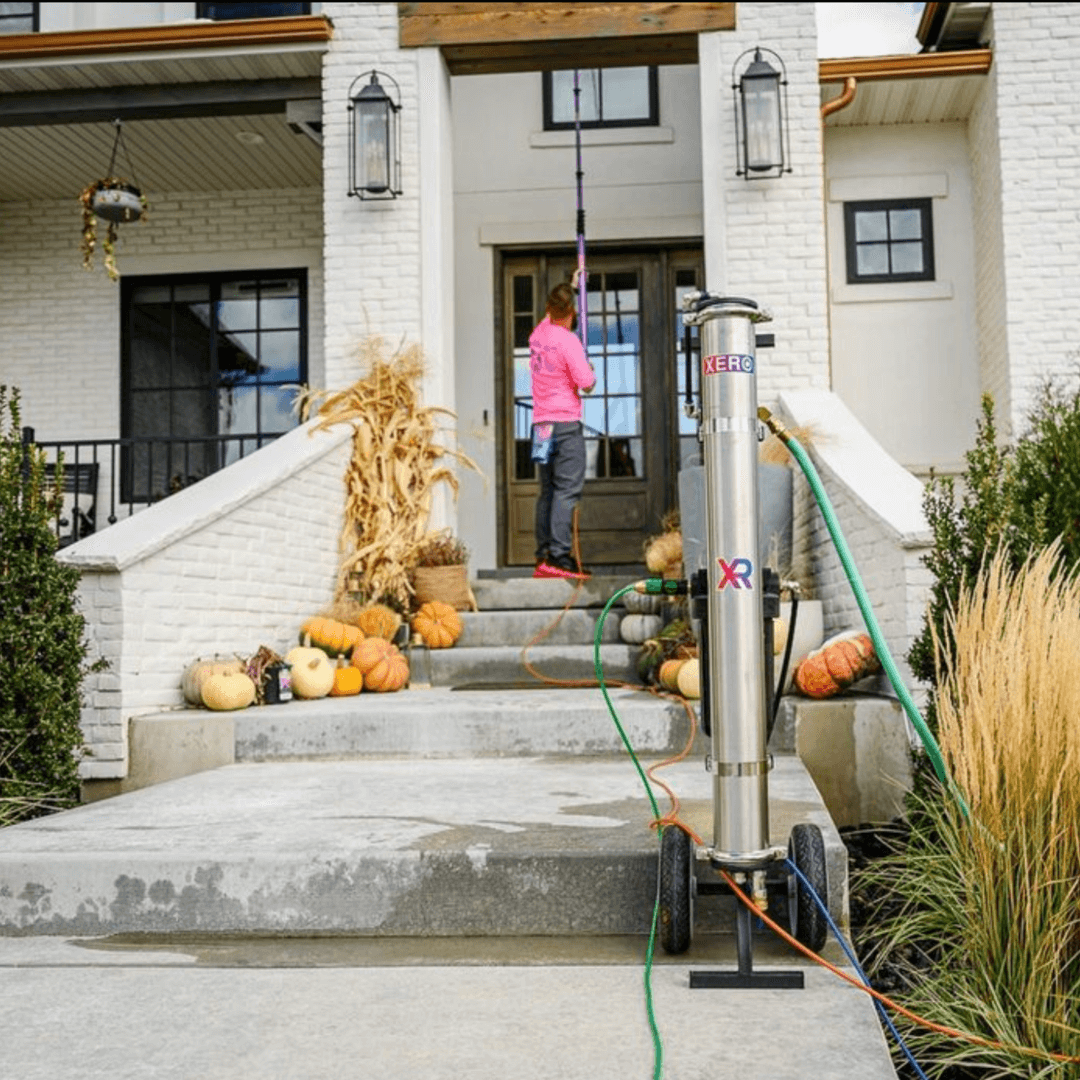
3 STAGE SYSTEM
Carbon Sediment Filter – Helps prevent material and debris from entering your RO membrane, as well as Chlorine.
Change Frequency & Replacement Cost
Change once a month during busy season, every 3 months with infrequent use. Available online or in big box stores. Cost around $7 per filter.
RO Membrane – Does all the heavy work. Removes up to 90 – 95% off all Total Dissolved Solids.
Change Frequency & Replacement Cost
With proper care, your RO membrane will last for many years. Replacement cost around $400 online.
Deionization Resin, the final step in filtration. Designed to bring your water to 0 TDS
Change Frequency & Replacement Cost
If your DI tank is part of a multistage system like shown here you will likely replace your resin a couple of times per year. Get a 1/4 cubic foot replacement for around $80 online.
3 STAGE SYSTEM
Carbon Sediment Filter – Helps prevent material and debris from entering your RO membrane, as well as Chlorine.
Change Frequency & Replacement Cost
Change once a month during busy season, every 3 months with infrequent use. Available online or in big box stores. Cost around $7 per filter.
RO Membrane – Does all the heavy work. Removes up to 90 – 95% off all Total Dissolved Solids.
Change Frequency & Replacement Cost
With proper care, your RO membrane will last for many years. Replacement cost around $400 online.
Deionization Resin, the final step in filtration. Designed to bring your water to 0 TDS
Change Frequency & Replacement Cost
If your DI tank is part of a multistage system like shown here you will likely replace your resin a couple of times per year. Get a 1/4 cubic foot replacement for around $80 online.
Proprietary VS Non-Proprietary
Replacement Filters
Take note of the difference before you purchase a system.
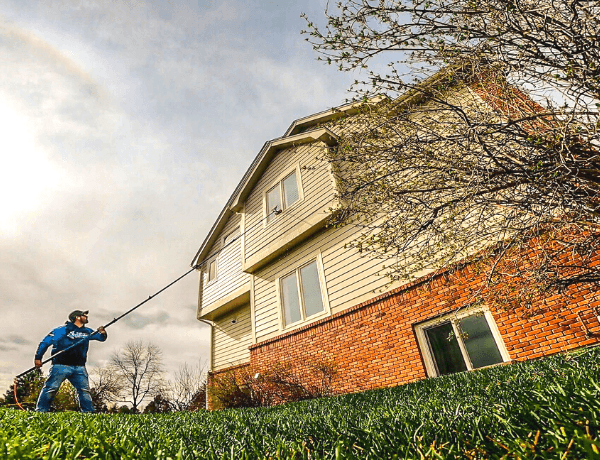
Non-Proprietary
These are great because it allows you to replace your filters at a lower cost. Typically you can also source the replacement filter from multiple vendors or even locally.
Carbon Sediment Filter – Available online and in big box stores
RO Membrane – Available from select online distributors
DI Resin – Available Online and locally in some areas
Proprietary
These types of filters typically cost more and you are limited to purchasing from one particular vendor. However, they usually come with an element of convenience. Think faster replacement time and ease.
4 Ways to Get Pure Water
All 4 types of systems shown here will produce 0 TDS spot free water.
They all have the same essential component as the final component "DI Resin"
The 4 Core Components
of a MultiStage System
This is what makes up a typical multistage system!
DI Tanks VS
Multi-Stage Systems
Which is best for you? Let's dive in!
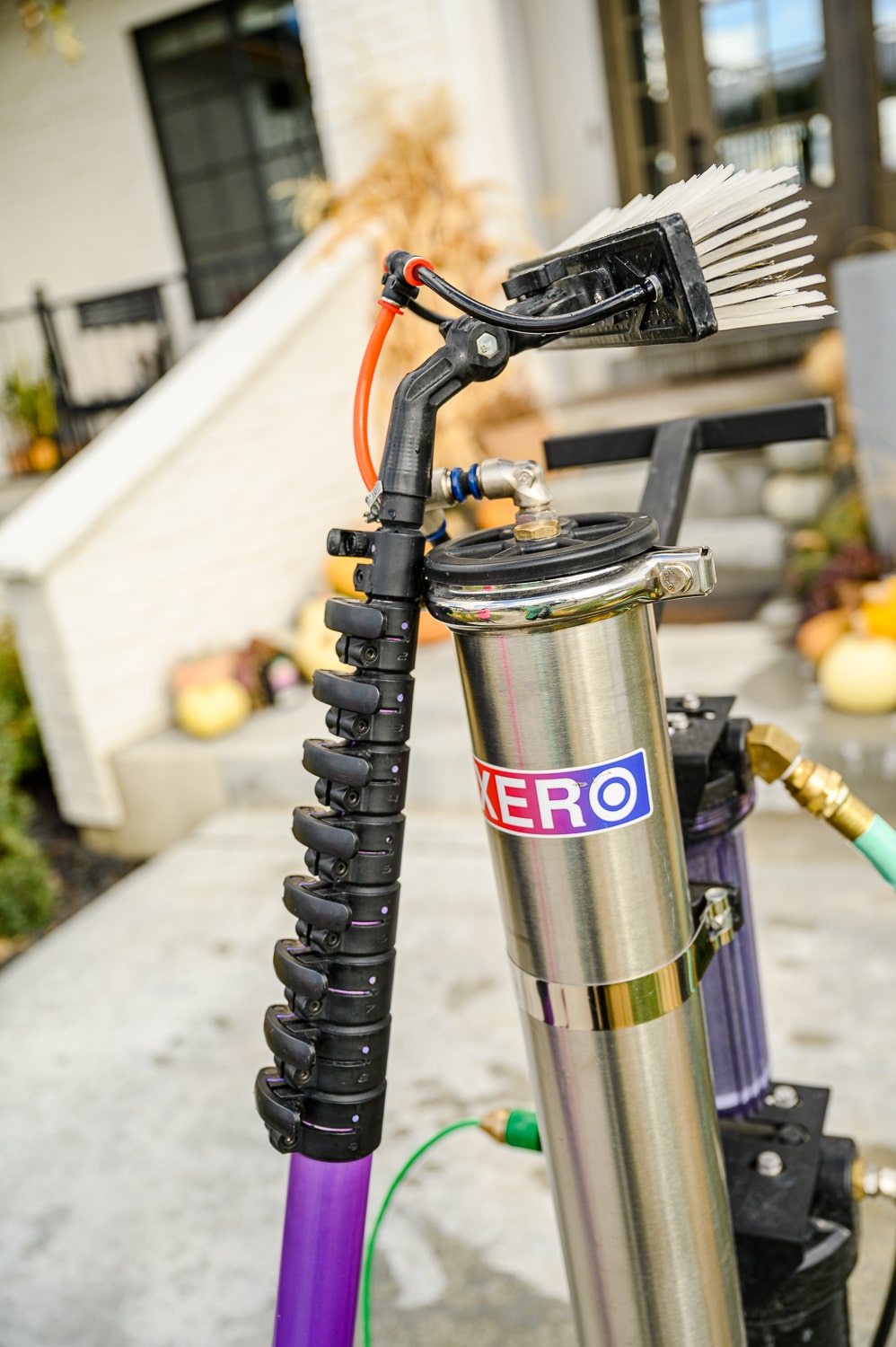
A general rule of thumb is if your TDS is under 100 a simple DI tank based system (such as the popular XERO DI Tank) will be the most cost-efficient for you. Check out our Single Stage Systems for more options. Certain areas of the country, South Carolina as an example, have very low TDS readings. We don't suggest multistage units for that state because they are simply not needed and are overkill.
However, if your TDS is over 100 and you intend to use the system on a regular basis, a multistage system will be the most cost-effective for you. Can you use a simple DI system in a hard water area? Sure. Will you burn through your resin very quickly? Yes! You need to think about what is best and most cost-effective long term because DI resin is expensive. Check out our section of Multi-Stage Systems or Delivery Systems that are tailored for hard water.
Reminder
In a Multi-Stage System, the RO Membrane serves one purpose and one purpose only: to lower your TDS to a level that will extend the life of your DI Resin. Carbon Sediment Filters are there to protect the RO from chlorine and sediment.
Expected Water Production Volume
Broken down by system type and how much you need!
-
By System Type
- Simple DI Tank – 1/2 Gallon Per Minute
- Basic 3 Stage – 1/2 Gallon+ Per Minute
- Multi-Stage With Water Tank – 1 Gallon Per Minute
- Multi-Stage On Demand With Pump – 1.5 Gallons Per Minute
-
How Much Do I Need?
1 Operator can clean with 1/4 – 1/2 a gallon per minute.
2 Operators cleaning at the same time – 1 gallon per minute.
3 Operators cleaning at the same time – 1.5 gallons per minute.


